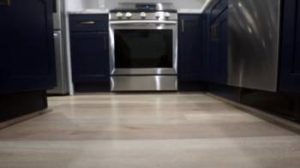Outdoor living spaces have become increasingly popular, with homeowners looking for the perfect combination of durability, aesthetics, and sustainability. In recent years, Thermory decking has emerged as a frontrunner in the world of high-quality, thermally modified wood decking.
But is it worth the investment? In this article, we’ll dive into the pros and cons of Thermory decking, share real customer reviews, and answer some frequently asked questions to help you make an informed decision for your outdoor oasis.
The Pros of Thermory Decking: A Sustainable And Attractive Option

- Durability and Resistance
One of the most significant advantages of Thermory decking is its exceptional durability. The thermally modified wood is resistant to rot, decay, and insects, making it an excellent choice for outdoor use.
The process of thermal modification increases the wood’s density, further enhancing its durability and longevity. Homeowners who opt for Thermory decking can expect their deck to last 25-30 years, if not longer, with proper maintenance.
- Aesthetics and Stability
Thermory decking is available in two beautiful hardwood species: ash and pine. The thermal modification process gives the wood a rich, dark color that many homeowners find appealing.
Additionally, the process results in a more stable product, reducing the likelihood of warping, cupping, or twisting, which are common problems with traditional wood decking materials.
- Sustainability and Eco-Friendliness
Thermory decking is an eco-friendly choice for environmentally-conscious homeowners. The wood used in Thermory decking is sourced from responsibly managed forests, and the thermal modification process is chemical-free.
The result is a decking product that is both beautiful and sustainable, with a significantly smaller carbon footprint than traditional hardwood decking materials like Ipe.
- Easy Installation and Maintenance
Thermory decking is easy to install, thanks to its unique hidden fastening system. This innovative system not only provides a clean, finished appearance, but it also allows for easy removal and replacement of individual boards if necessary.
In terms of maintenance, Thermory decking requires minimal upkeep. Simply clean it with soap and water as needed, and periodically apply a UV-protectant oil to keep the color vibrant and the wood protected.
The Cons of Thermory Decking: Higher Costs and Limited Availability
- Initial Cost

One of the primary drawbacks of Thermory decking is its higher initial cost compared to traditional wood decking materials.
However, it’s essential to consider the long-term value of the product.
The exceptional durability and low maintenance requirements mean that Thermory decking can be a more cost-effective choice in the long run.
- Limited Availability
Thermory decking is not as widely available as some other decking materials, which may be a concern for some homeowners.
It’s essential to work with a reputable supplier who can provide accurate information about the product and ensure you receive a genuine Thermory decking product.
Frequently Asked Questions (FAQ)
Thermory decking is designed to last 25-30 years, if not longer, with proper maintenance. Its durability and resistance to rot, decay, and insects make it a long-lasting option for outdoor living spaces.
Thermo ash and Ipe are both excellent choices for decking materials. Thermo ash is a more sustainable and eco-friendly option, as it is sourced from responsibly managed forests and undergoes a chemical-free modification process. In terms of durability, both materials are highly resistant to rot, decay, and insects. Ultimately, the choice between thermo ash and Ipe will come down to personal preferences, budget, and environmental considerations.
Thermory decking is available in two hardwood species: ash and pine. These species undergo a thermal modification process that enhances their durability, stability, and resistance to rot, decay, and insects. The result is a beautiful, high-quality decking product that is well-suited for outdoor use.
The cost of a thermally modified wood deck, like Thermory decking, can vary depending on factors such as the specific product, the size of the deck, and the region in which you live. Generally speaking, thermally modified wood decking is more expensive upfront than traditional wood decking materials. However, its durability, low maintenance requirements, and long lifespan can make it a more cost-effective choice in the long run. It’s essential to get multiple quotes from reputable suppliers and installers to ensure you get the best price for your project.
Maintaining Thermory decking is relatively simple. Clean the deck with soap and water as needed. That will remove dirt and debris. Periodically apply a UV-protectant oil to the wood to help maintain its color and protect it from the elements. Unlike traditional wood decking materials, Thermory decking does not require frequent staining or sealing, making it a low-maintenance option for homeowners.
Also Read: Reasons To Have TimberTech DrySpace.
In Conclusion
Thermory decking has a lot to offer homeowners seeking a durable, attractive, and sustainable option for their outdoor living spaces. Its exceptional durability, resistance to rot, decay, and insects, and low maintenance requirements make it a long-lasting and cost-effective choice.
Additionally, the beautiful aesthetics and eco-friendly nature of the product make it an appealing option for environmentally-conscious homeowners.
However, it’s essential to consider the higher initial cost and potential challenges with availability when making your decision. If you’re willing to invest in a high-quality product that will provide lasting value and enjoyment for years to come, Thermory decking may be the ideal choice for your outdoor oasis.
With this comprehensive review, we hope to have provided you with valuable information to help you make an informed decision about Thermory decking.
By weighing the pros and cons, understanding the real-life experiences of homeowners who have chosen Thermory, and considering the answers to common questions, you can confidently choose the decking material that best suits your needs, preferences, and budget.



